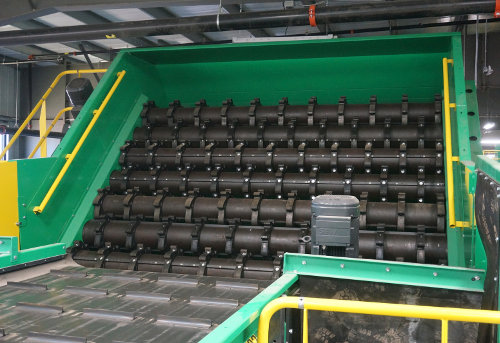 by Mark Neitzey, Director of Sales, Van Dyk Recycling Solutions
by Mark Neitzey, Director of Sales, Van Dyk Recycling Solutions1. Is artificial intelligence (AI) the answer to all of my MRF’s problems?
When considering new AI technology, be aware that its performance is dependent on proper preparation of the material it’s fed. Any separation device—a screen, an optical sorter, a robot—likes to be fed a steady diet of consistent material all on a single layer of the conveyor.
2. How can I evenly spread material out and avoid clumping in the stream?
Setting successive conveyors at different speeds thins material out. Proper sequencing also helps (going from narrow to wide or turning material at a 90-degree angle can create problems). Proper cleats on inclining conveyors breaks up clumps. A vibratory feeder or a disc spreader can be perfect for spreading material across a wide belt.
3. How can I properly screen for size without my screens getting clogged with film?

Mechanical screens remove large fractions and fines to direct a target size to an intelligent separation device (like an optical sorter or robot). In the last few years screens have greatly improved. Van Dyk and other suppliers now offer nonwrapping screens that properly size material without allowing film bags to wrap around their shafts.
4. I can’t get my paper clean enough. Can I just drop in an optical sorter to make a “China spec” grade?
Optical sorters shooting positively on paper is a great way to get clean fiber. But consider adding a wind tunnel to its acceleration conveyor. Steady air flow applied at the same speed as the conveyor will stabilize light materials so the belt can accelerate, which increases throughput while maintaining or exceeding accuracy on light materials.
5. My temporary labor service can’t supply the sorters I need to run at capacity. Should I install robots?
Robots can be a viable solution for quality control sorting, such as on a container line, but their recognition is improved by being fed properly prepared material. An elliptical or ballistic separator performs 2D and 3D separation and is a must-have to properly prepare your container line for further processing.
